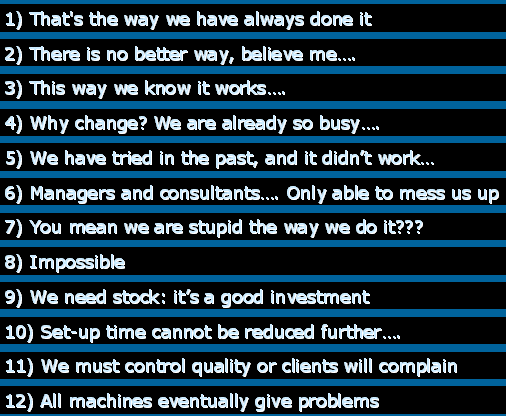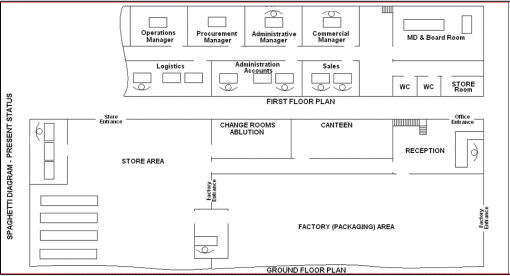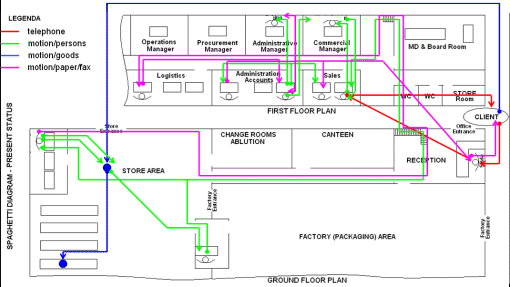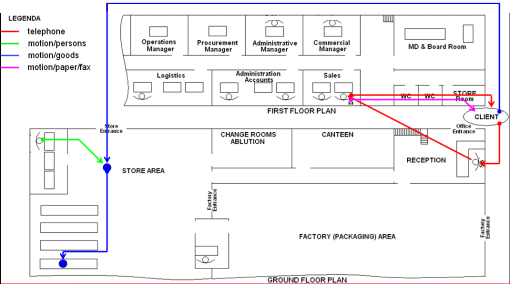|
What is Lean Thinking?
Lean Thinking (LT) is the extrapolation of Lean principles - implemented from long time in Manufacturing Operations - for their deployment in all industrial sectors (project - construction - services - continuous processing - public sector - etc.) as well as in all enterprises' processes (administrative, product development, accounting, etc.)
In a nutshell:
LT focuses over the removal of waste from the entire Value Chain (more »).
Therefore, Lean Thinking has rapidly become the new millennium driving philosophy for industry, incorporating Value Adding Management (more ») and Process Engineering (more ») principles and others.
LT has 2 main targets:
- Elimination of Waste in any form
- Maximisation of Value to Client
Lean Thinking is based on 5 core concepts:
- VALUE. Always as defined and/or perceived by the Customer. It is always the Customer that sets the validity of the needed, wanted, expected, desired, received or perceived Value. Value is what the Customer buys or is prepared (or not prepared) to buy.
- VALUE STREAM. The way value is produced and delivered: the overall planning, organising, operational process that delivers a finished product or service to Customers.
- FLOW. After eliminating all process-inherent waste, the remaining and required value-adding steps must "flow" - the process must flow both "internally" (Operation Side) and "externally" (Customer Side).
- PULL. Or making the value stream "flow" "pulled" by the market (triggering flow from the customer needs).
- EXCELLENCE. There is no end to the process of minimising time, efforts, space, costs and mistakes while offering a product or service which is closer and closer to what customers actually want, need, expect or dream of….
definitions
Value-adding activity: any activity that contributes directly to satisfy the needs of the customers.
Non-value-adding: anything that takes time or resources but does not contribute directly to satisfy the needs of the customers.
LT Operational Targets:
- Cut the steps to Value-Adding only
- Cut the time to Value-Adding-Time
- Zero defects
It's easy to see that Lean Thinking is very drastic in its approach, having no mercy at all for waste.
Obviously LT will encounter a lot of resistance when being introduced in enterprises with rather "traditional" methods:
- the "batch" mentality is always there, deeply-rooted in the industrial DNA....
- the "push" mentality is also there, ready to attack....
- people prefer "reactive" thinking (fighting fires) as it is much easier than pro-active/projective thinking
Excuses will flock: traditional people prefer to use creative thinking only to fight something new (rather than using creativity to make it work..... tragic). No wonder billboards in enterprises' corridors are full of hilarious "tables of excuses":

and more.....

Sounds familiar?
lean thinking - the tools
Here are the main LT tools:
- 5W2H (what? - why? - where? - when? - who? - how? - how much?)
- 5Why (asking why in sequence up to 5 times, until the root cause is identified)
- TRIZ
- SOCO (5S) (more »)
- TAKT TIME
- Flow Charts
- Spaghetti Diagram
- Value Stream Mapping (more »)
- Time Observations
- Bar Charts
- Communication Circle
- and others
It goes beyond the purpose of these Synoptic Pages to illustrate all of them, however it's worth to see in detail how the Spaghetti Diagram (SD) works. The Spaghetti Diagram is a valid, simplified alternative to Value Stream Mapping (more »).
The tool serves the purpose of mapping a process in a simple way in order to eliminate its inherent waste and make it leaner. The SD can be applied to any process: manufacturing, construction, office, design, procurement, etc.
Firstly, we consider the physical area (to scale) in which the process under observation takes place. For a process spanning over several functions (for instance: administrative, commercial, accounting, stores) the entire area concerned is considered (including clients and suppliers, as the case may be), as in the example:

Also all persons involved in the process may beneficially be represented in the map.
Then we map the current state of the process under observation: we display all activities forming the process (not necessarily in sequence - but this could be organised) illustrating also "motion" (of goods/materials - of persons - of information, possibly differentiating between verbal, paper or fax, telephone, etc.). Motion is displayed with lines drawn between starting and ending point.
In a practical example, the SD looks like this:

The primary purpose of a SD is to make you think: why all those lines? why all those movements? why all those steps? why all those persons? who and what is adding value (to the client)? who is merely re-shuffling waste? who is doing absolutely nothing?
An accurate value-adding analysis will then reveal all waste present in the process. Waste must simply be eliminated: Lean Thinking does not compromise!
With an approach similar to that of Value Stream Mapping (more ») (but much simpler) we brainstorm on ways to eliminate waste and to make the process leaner or leanest.
Gradually we visualise a future state in which the bulk of the waste has been removed: what is left is just value-adding activities, value-adding steps, value-adding time and zero errors/defects.
In the example considered, the future state SD looks like this:

This simple example (concerning a "goods-returned process"), shows and re-iterates the power and the principles of Lean Thinking:
- no space for waste in lean processes
- maximum value to the customer, fast and effectively
- obtained through the appointment of a multi-skill/multi-function process owner
- the division of labour principle (Adam Smith style) is killed once and forever
In conclusion, thinking is what must change: today, thinking can only be lean
|






